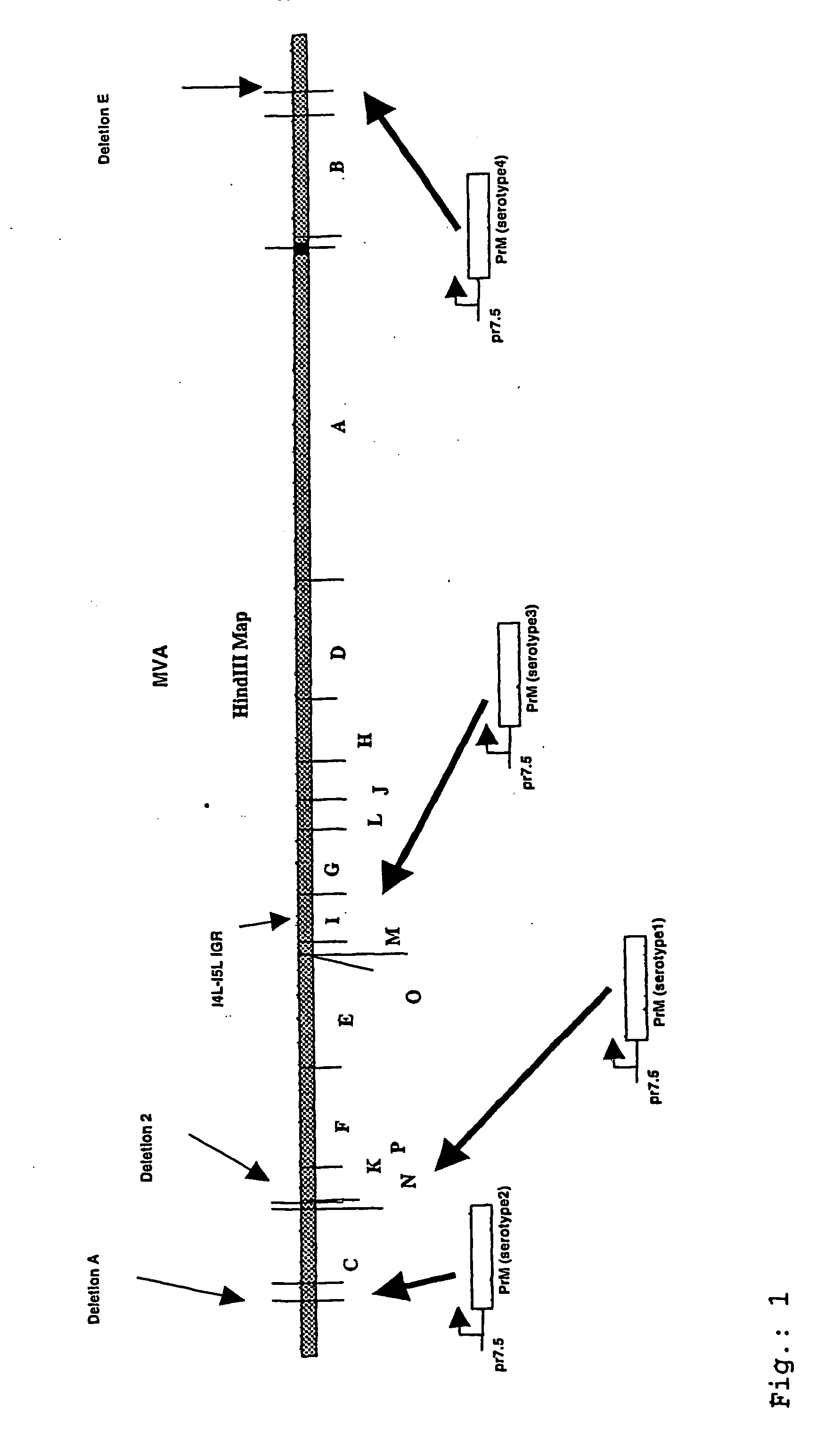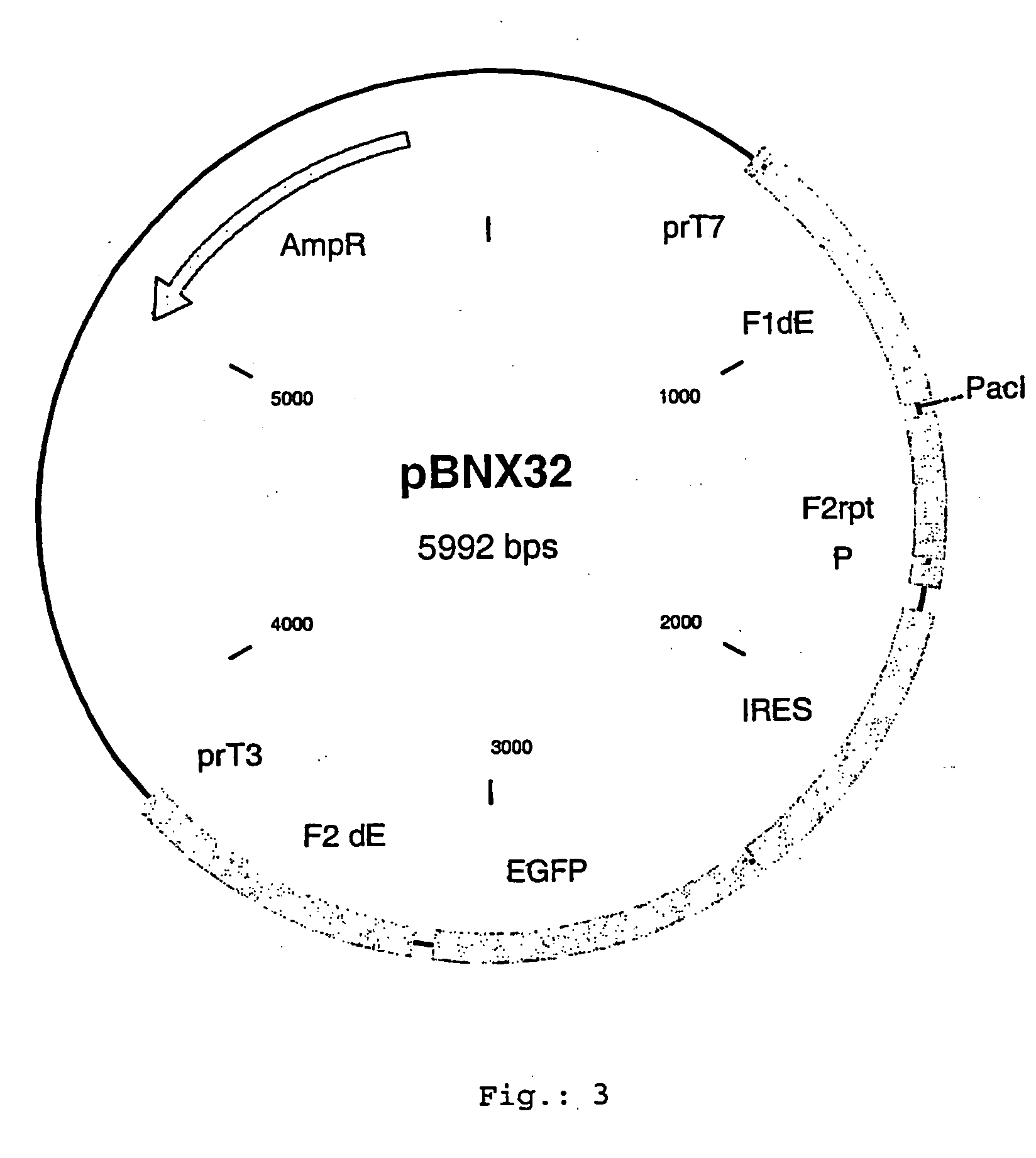Recombinant poxvirus expressing homologous genes inserted into the foxviral genome
a technology of foxviral genome and recombinant poxvirus, which is applied in the direction of fungi, drug compositions, immunological disorders, etc., can solve the problems of increased risk of severe complications, large public health problems, and inability to vaccinate people, so as to achieve stable, effective and reliable vaccines.
- Summary
- Abstract
- Description
- Claims
- Application Information
AI Technical Summary
Benefits of technology
Problems solved by technology
Method used
Image
Examples
example 1
Insertion Vectors
Insertion Vector for Deletion A
[0077] For the insertion of exogenous sequences into the MVA genome at the so-called deletion A or deletion 1 respectively, corresponding to the genome position 7608-7609, a plasmid vector was constructed, which comprises about 600 bp of the flanking sequences adjacent to the deletion site A. To isolate the flanking sequences from the genomic MVA-BN DNA, suitable PCR primers can be designed with suitable computer software (DNAsis, Hitashi software engeneering, San Bruno, USA). Such primers comprise extensions with restriction enzyme sites, which will be used to clone the flanking sequences into a vector plasmid. In between these flanking sequences, a selection gene cassette is introduced, e.g a NPT II gene (neomycin resistance) under the transcriptional control of a poxyiral promoter. Additionally, there is a cloning site for the insertion of additional genes or exogenous sequences to be inserted into deletion site A. One such vect...
example 2
Insertion Vectors
Recombination Vector for Intergenic Region 136-137 (IGR 136-137)
[0126] For the insertion of exogenous sequences into the MVA genome at the so-called intergenic region (IGR) 136-137 corresponding to the genome position 129.940 a plasmid vector was constructed which comprises about 600 bp of the flanking sequences adjacent to the insertion site. To isolate the flanking sequences from the genomic MVA-BN DNA suitable PCR primers can be designed. Such primers comprise extensions with restriction enzyme sites, which will be used to clone the flanking sequences into a vector plasmid. In between this flanking sequences, a selection gene cassette is introduced, e.g. NPT II gene (neomycine resistance) under the transcriptional control of a poxyiral promoter (P). Additionally there is a cloning site for the insertion of additional genes or exogenous sequences to be inserted into IGR 136-137 (PacI). One such vector construct according to the present invention is disclosed i...
PUM
| Property | Measurement | Unit |
|---|---|---|
| temperature | aaaaa | aaaaa |
| temperatures | aaaaa | aaaaa |
| volume | aaaaa | aaaaa |
Abstract
Description
Claims
Application Information
 Login to View More
Login to View More - R&D
- Intellectual Property
- Life Sciences
- Materials
- Tech Scout
- Unparalleled Data Quality
- Higher Quality Content
- 60% Fewer Hallucinations
Browse by: Latest US Patents, China's latest patents, Technical Efficacy Thesaurus, Application Domain, Technology Topic, Popular Technical Reports.
© 2025 PatSnap. All rights reserved.Legal|Privacy policy|Modern Slavery Act Transparency Statement|Sitemap|About US| Contact US: help@patsnap.com



